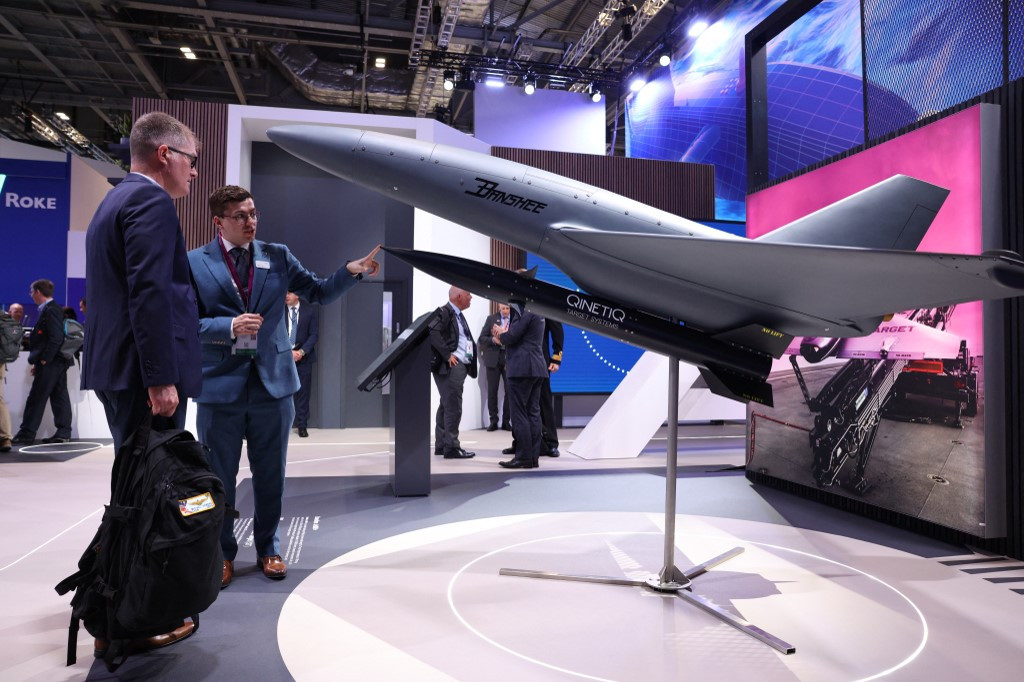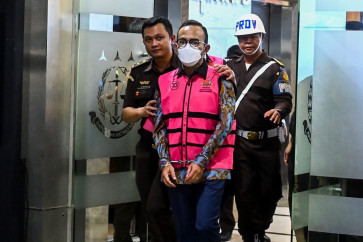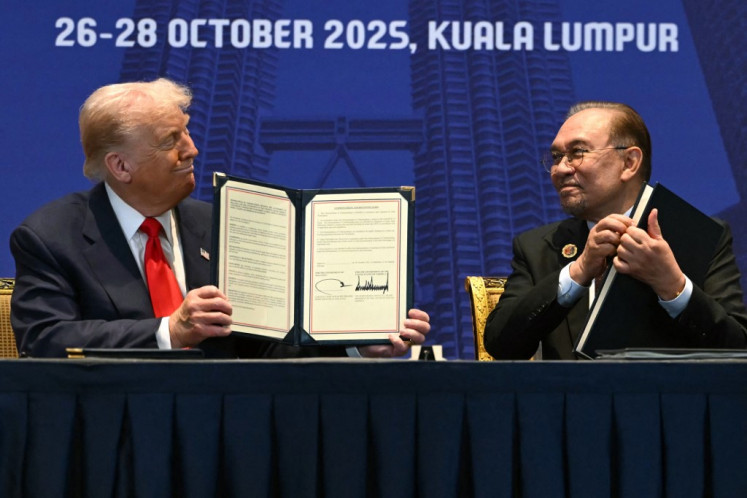Popular Reads
Top Results
Can't find what you're looking for?
View all search resultsPopular Reads
Top Results
Can't find what you're looking for?
View all search resultsDrone defense gap sparks industry surge
Events have also shown enormous capacity gaps when it comes to wider air defense, including antiaircraft rockets to shoot down incoming missiles.
Change text size
Gift Premium Articles
to Anyone
A
s unidentified drones brought chaos to multiple European airports last month, former Danish Air Force officer Dan Hermansen was not surprised to find his company MyDefence suddenly besieged with orders.
Despite several years of drone warfare in Ukraine, as well as in locations as diverse as the Red Sea, Sudan and Myanmar and a host of incidents in the United States and Europe, Hermansen believes as much as 99 percent of European critical infrastructure has no system at all to detect and defend against the rising threat.
It is a hole governments want fixing fast.
In Ukraine, military innovators and small firms, including some Western companies like MyDefence, have used artificial intelligence, cameras and microphones as well as electronic sensors to build a relatively cheap and effective surveillance network when it comes to tracking and killing drones.
But that war, along with events in Israel, has also shown enormous capacity gaps when it comes to wider air defense, including antiaircraft rockets to shoot down incoming missiles.
In the run-up to this summer’s NATO summit, alliance Secretary General Mark Rutte said he believed member nations needed at least a 400 percent increase in spending on air defenses to be credible, although to deliver truly effective protection, even that might be an underestimate.
Existing systems like the US Patriot are colossally expensive at around US$4 million for a single rocket, creating a market opportunity for a host of new companies, which their venture capital funders are now racing to capitalize on.
It is a dynamic that both the Pentagon and multiple other governments are looking to speed up further.
There are growing signs the US President Donald Trump administration's Pentagon views the Ukraine war and recent drone and missile exchanges in the Middle East as breaking the defense economic model.
That has particularly included both drone and counter-drone systems, spurred in part by a 2024 drone attack on a US military base in Jordan that killed three US personnel and injured almost 50.
At the Association of the US Army conference in Washington last week, Army Secretary Daniel Driscoll gave a speech that was described as “going scorched earth” on traditional US defense procurement practices, pledging to dramatically speed things up and get better value.
Driscoll’s campaign to upend the Pentagon’s traditional reliance on major companies like Lockheed Martin, Boeing and Raytheon goes beyond just air defense and drones.
Namely, he has talked of dramatically revamping US military repairs so they can be conducted more cheaply with 3D printing at the front line, rather than be shipped back to their contractors at significant expense.
Even that decision, however, is driven in part by the rising drone and missile threat.
In any major conflict, particularly in the Pacific, US commanders believe that Chinese drones and missiles would make logistics resupply extremely challenging, forcing forward military units to rely on their own repairs.
Without reliable air and drone defense, those forward units would likely find themselves obliterated.
With mainstream defense contractors increasingly outpaced, serious venture capital investment is now plowing into firms that believe they can disrupt that model and deliver vital capability at much greater speed.
Cambridge Aerospace, incorporated barely a year ago, has raised more than £100 million (US$134 million) and is already testing its new air defense interceptors every week.
"Ultimately, defense comes down to economics," says Cambridge Aerospace founder Stephen Barrett.
Cambridge Aerospace says it is looking to produce thousands of units per month by the end of the decade, and will also build its own solid rocket motors, of which there is a current global shortage. Its “Skyhammer” interceptor is designed to take out cruise missiles and large drones at low altitudes, while the higher altitude “Starhammer” will target ballistic missiles.
The hefty amounts of venture capital funding now available for defense have allowed firms like Cambridge Aerospace to take much greater financial risk by starting to build factories even before major government orders are received.
That is itself a very different model to conventional “defense primes”, whose high charges for each government-funded piece of work are often partly considered essential to keep the companies solvent during delays and fallow periods.
Even as its own drones and missiles continue to plague Ukraine, Russia itself now also acts as a warning sign of the costs of failing to secure its airspace over key facilities.
Ukrainian drone strikes have now damaged significant amounts of Russia’s energy infrastructure and continue to act as a major embarrassment for the Kremlin, which has so far largely prioritized defensive weaponry over systems to defend its own domestic airspace.
The spread of drones has also dramatically revamped conflict in the developing world, ranging from Libya to Myanmar, driving demand for much cheaper air defense systems.
Turkish defense contractor Aselsan unveiled its own counter-drone capability last month, designed to be mounted on a wheeled armored vehicle and provide close protection for convoys, bases and critical infrastructure. That looks set to be part of Turkey’s “Steel Dome” integrated air defense effort, designed for both export and domestic protection.
All that technology, however, still requires clear rules of engagement for its use, something NATO nations were discussing in Brussels last week at meetings of ministers and defense chiefs. The issues included when allied fighter jets or defenses can be authorized to fire on a manned Russian aircraft testing NATO air defenses and entering national airspace.
"We are not going to take down an airplane in NATO airspace if it does not pose a threat,” alliance chief Rutte said afterward. "But if it poses a threat, I can assure you that our military people have all the authorities they need."
---
The writer is a columnist for Reuters. The views expressed are personal.











